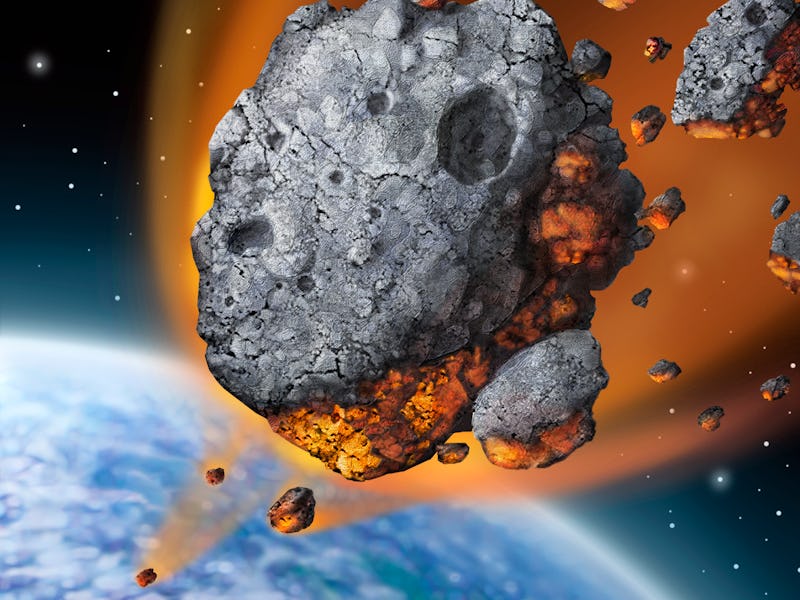Watch: This Asteroid Just Flew Closer to Earth Than the Moon
It was the size of a killer whale.

Early Friday morning, a killer whale-sized asteroid sailed past Earth, though, thankfully, it once again posed no threat to humanity.
This rogue space rock, called 2018 DV1, actually got pretty up close and personal to our home planet. It got about 70,000 miles from Earth, which is roughly three times closer than the moon. For context, the moon is about 238,900 miles from our pale blue dot.
Join our private Dope Space Pics group on Facebook for more strange wonder.
A team of astronomers at Mount Lemmon Observatory in Arizona first spotted the 23-foot-wide asteroid on February 26. The object was then tracked in a livestream by astrophysicist Gianluca Masi at the Bellatrix Astronomical Observatory in Italy, as it streaked across the sky at about 12:30 a.m. Eastern.
This comes a little over a month after “Potentially Hazardous Asteroid,” 2002 AJ129, caused a stir of fearmongering media coverage.
Any asteroid that’s roughly 500 feet in diameter and comes within 4.6 million miles of Earth is dubbed “potentially hazardous” by NASA. But this doesn’t actually mean they’re going to slam into us.
“This ‘potential’ to make close Earth approaches does not mean a PHA will impact the Earth,” states the FAQ section of NASA’s Jet Propulsion Laboratory. “It only means there is a possibility for such a threat.”
Hunks of space rocks zipping past Earth is nothing new or uncommon. Since 1900, NASA has observed well over 17,000 “near-Earth” asteroids.
Even if an asteroid were to be on a collision course with Earth, it would most likely end up being seared to ashes in Earth’s atmosphere. In a statement, NASA claimed that “an automobile-sized asteroid” enters the atmosphere and burns up before it hits the surface roughly once every year.
The odds of a civilization-ending space stone crashing down on us are slim to none. In the same statement NASA says, “only once every few million years, an object large enough to threaten Earth’s civilization comes along.”
So take a breath, plop down on your couch, and watch 2018 DV1 whizz past Earth. It’s all good, we promise.